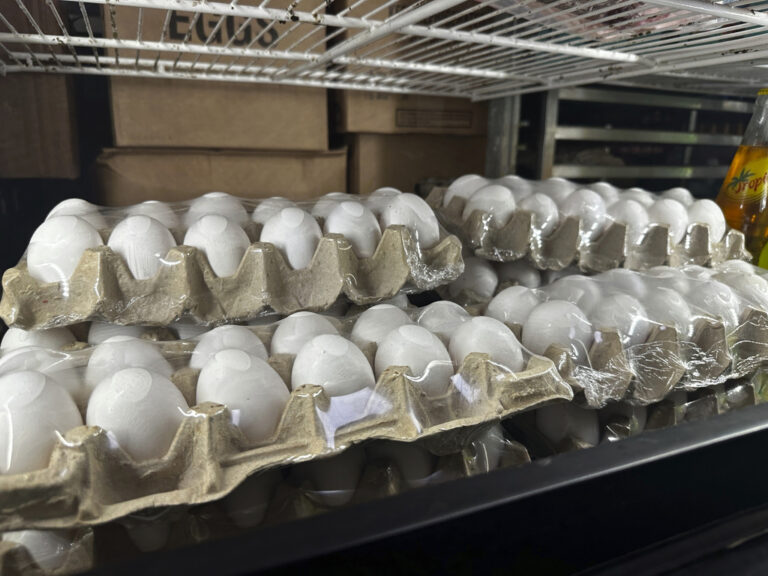After nearly a decade of being all but invisible, inflation — or the fear of it — is back.
Tentative signs have emerged that prices could accelerate in coming months. Pay raises may be picking up a bit. Commodities such as oil and aluminum have grown more expensive. Cellphone plans are likely to appear costlier.
The specter of high inflation has spooked many investors, who worry it would force up interest rates, making it costlier for consumers and businesses to borrow and weighing down corporate profits and ultimately the economy. Historically, fear of high inflation has led the Federal Reserve to step up its short-term interest rate increases.
It’s a big reason investors have dumped stocks and bonds in the past two weeks.
Yet for all the market turmoil, inflation for now remains quite low: Prices, excluding the volatile food and energy categories, have risen just 1.7 percent in the past year. That’s below the Fed’s target of 2 percent annual inflation.
Most economists expect inflation to edge up and end the year a few tenths of a percentage point above the Fed’s target. But most foresee only minimal effect on the economy.
“I don’t think that’s a huge tragedy,” said Mark Vitner, an economist at Wells Fargo Securities.
Inflation, though, is hard to forecast. One widely followed gauge is the government’s monthly report on consumer price inflation. The January CPI report will come out Wednesday.
Here are some ways to track the direction of inflation in the coming months:
___
HOW MUCH DOES YOUR CELLPHONE PLAN COST?
Roughly a year ago, major wireless carriers like Verizon and AT&T began offering unlimited wireless data plans. This enabled their customers to watch more video, stream more music and trade more photos. It also lowered inflation.
That’s because government statisticians don’t simply review price changes when they calculate inflation. They also try to measure what consumers actually receive for what they pay. Because unlimited data plans are a better deal, they in effect lowered the overall cost of wireless phone services. Many economists cited this as a reason inflation slowed last year even as the unemployment rate fell.
Still, the cellphone plans were a one-time change. In March, their impact will pass from the government’s year-over-year inflation calculations. Most analysts expect this change to boost that month’s inflation estimate.
___
HOW MUCH WILL PAYCHECKS RISE?
There are tantalizing early signs that many employers, grappling with low unemployment and a shortage of workers, are finally raising pay to attract and keep more workers. Average hourly pay rose 2.9 percent in January from a year earlier, the sharpest year-over-year increase in eight years. A separate quarterly measure from the Labor Department showed that wages and salaries in the final three months of last year grew at the fastest pace in almost three years.
In theory, higher pay can lead to inflation: Companies raise prices to offset their higher wage bill.
But it doesn’t always work that way. Pay climbed at a 4 percent annual clip in the late 1990s, for example, and yet core inflation barely rose. It edged up to about 2.6 percent from 2.3 percent.
Companies can choose to eat the extra cost and report lower profits. They could also use the proceeds from last year’s tax cut to pay higher wages even while keeping prices in check.
___
HOW PLENTIFUL ARE WORKERS?
Another factor that may keep wages low and limit inflation is that plenty of workers are still available overseas. Companies could shift work abroad if pay gets too high.
And there may be more people in the United States available to fill jobs than the low 4.1 percent unemployment rate would suggest. The proportion of Americans who have jobs still hasn’t returned to its pre-recession peak.
___
WHAT DO CONSUMERS EXPECT?
Whether consumers expect inflation to accelerate or stay the same can become a self-fulfilling prophecy. Once consumers’ inflation expectations pick up, they typically demand higher pay, which can lead companies to raise prices to cover the costs.
That makes expectations of inflation an important gauge to watch. And yet such expectations have changed little this year, which could keep inflation in check.
According to the Federal Reserve Bank of New York, consumers think inflation will be about 2.7 percent a year from now. Last April, consumers expected inflation to be 2.8 percent in a year.
___
HOW MUCH ARE YOU PAYING IN RENT?
As millennials flooded cities and postponed home purchases, rents soared from Seattle to New York. Yet builders also constructed thousands of new high-rises. And there are signs that rents are leveling off. More young people are also starting to buy homes, which lowers demand for rental apartments.
This could help lower inflation over time. In December, rents rose 3.7 percent from a year earlier. While that’s faster than paychecks are rising — squeezing many renters — it is still below the recent peak of 4 percent, reached in December 2016. That was the highest in nearly a decade.
(AP)












2 Responses
Inflation has been minimal or non-existent (i.e. “deflation”) for over a generation. In the United States, the only people who lived with inflation as adults are “boomers” or older. The “millenials” have no experience with inflation. Even in Eretz Yisrael, it has been over a generation since inflation was an issue (if you remember the lira, you remember inflation but if you think Israeli money was always a shekel, you don’t).
Inflation isn’t all that bad, especially if you have debts to pay. And for some reason, people with savings that earn interest that barely keeps up with the rate of inflation feel happier than people with zero-interest savings account that are going up in “real” value due to deflation.
The primary and often exclusive engine that drives inflation is government. All the talk about telephone plans, the price of energy and whatever distracts from the fact that governments control the printing and creating of money. When they spend more than they collect in taxes, they print money to cover their debts. That is what causes inflation.